The horrific murder of a Playboy Playmate on the verge of Hollywood stardom: 'That was her flaw, not being able to see the evil in people'
Dorothy Stratten was 20 when she was murdered by her estranged husband.
Dorothy Stratten was a teenager serving ice cream out of a Dairy Queen in Vancouver, Canada, when she caught the eye of Paul Snider, a local pimp with dreams of Hollywood fame.
It was 1978 and, at the time, those who knew them said Snider saw an opportunity in Stratten and began grooming her. Eventually, he persuaded her to pose for a nude photo shoot, which could help launch her career in Los Angeles.
Over the next two years, the feathered-hair blonde "girl next door" became a Playboy Playmate of the Year with a budding acting career.
"She was just breathtakingly beautiful," said actress Colleen Camp, who starred alongside Stratten in the 1981 film "They All Laughed." "There was something very otherworldly about being with her. … Time would stop and you just felt [like] you were in a frozen moment."
But before Stratten could reach the heights of her stardom, she was pulled under -- brutally murdered by Snider, the same man who had first discovered her.
"She didn't believe that everybody lied, and all the liars came to [Los Angeles]," said actor Max Baer Jr., one of Snider's friends, who is best known for playing Jethro Bodine on "The Beverly Hillbillies." "I said [to Snider], 'Do you care about her?' And he said, 'Yeah.' I said, 'Well if you really care about her...take her back to Vancouver. She doesn't belong here.' I said, 'She's nice. She's got a great figure, got a beautiful face and this town will destroy her.'"
Watch the full story on "20/20" THIS FRIDAY at 9 p.m. ET
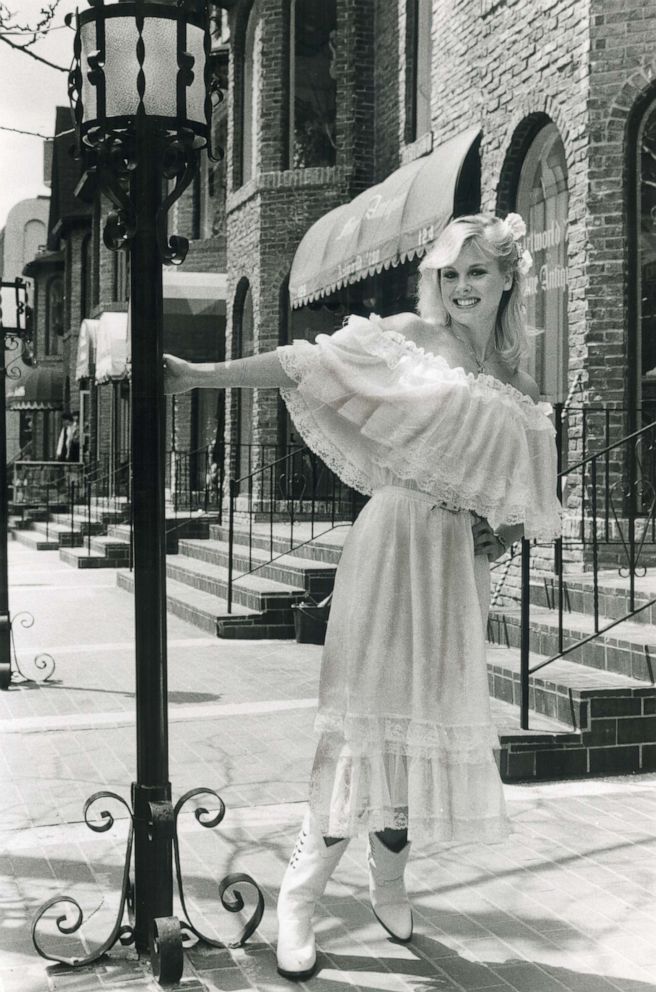
From Dairy Queen to the Playboy Mansion
Stratten started working at Dairy Queen as a young teen to help her mother, who worked in a school cafeteria. She had worked there for four years -- through all of high school -- when Snider walked in one day and saw her.
At the time, Snider had “made a pretty good living as a promoter for automobile shows and cycling shows,” said Teresa Carpenter, who wrote the Pulitzer-Prize winning Village Voice cover story on Stratten in 1980. But Carpenter told “20/20” that it “wasn’t enough to accommodate his extravagant taste, so he began to procure girls and pimp them on the side.”
"He didn't keep a low profile," she added. "In that, he drove a black corvette, wore a mink coat [and a] Star of David encrusted with jewels that he hung on his chest. He was called the Jewish pimp and he cultivated that."
Several people in Stratten's orbit said they saw Snider as a predator who was looking for his golden ticket. Mariel Hemingway, who played Stratten in the Bob Fosse film about Stratten's life "Star 80," said that Snider took advantage of Stratten's insecurities.
Hemingway said Snider would compliment her on the things about which she felt most vulnerable. She said he would also shower her with expensive gifts, nice dinners and even a gown to wear when he took her to her senior prom. She was still a teen then, he was 26.
"You think of him and you think of a wolf, and you think of him stalking his prey," said Hemingway. "In 'Star 80,' Paul Snider comes and takes Dorothy to her high school prom, and it really does feel uncomfortable."
In 1978, Playboy hosted the Great Playmate Hunt contest to scout for a new Playmate to be featured in the centerfold of its 25th anniversary issue the following year. Carpenter says Snider convinced then-18-year-old Stratten to be photographed nude by a professional photographer, painting images in her head of a brighter future than the one she might had imagined for herself.
"It took him a little while to talk me into agreeing to taking some test pictures," Stratten said during an interview with a local-access Canadian TV show. "I had never taken my clothes off for anyone I didn't know… It took me about two weeks to agree."
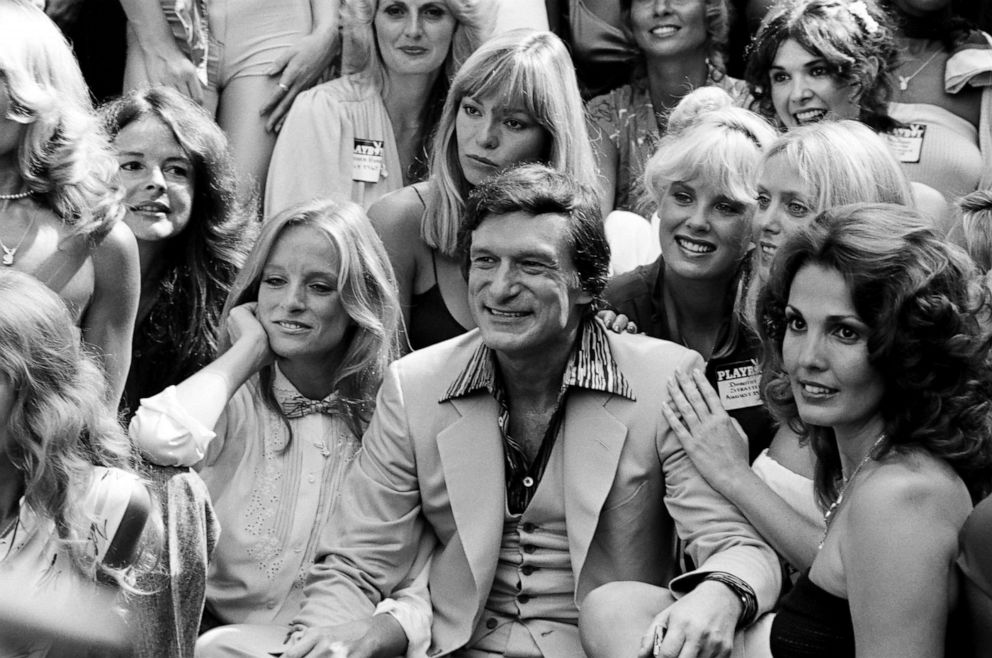
When the magazine saw Stratten’s test shots, it arranged to fly her down to Los Angeles. It was her first time on an airplane and in a limo.
"[Vancouver photographer Ken Honey] sent me the pictures and…I wanted her on the next plane," said Marilyn Grabowski, the magazine's former West Coast photo editor, who worked with its founder Hugh Hefner for over 40 years. "She was a total babe in the woods. I cannot remember another Playmate being that -- I don't want to say naive -- inexperienced, unused to her surroundings and not used to thinking that she was really beautiful."
When Stratten arrived at the Playboy offices, Grabowski said she explained to Stratten that they would take some test shots, send her home and then let her know if she made the cut.
Playboy editor's first reaction to seeing Dorothy Stratten photos
"I called her a woman-child," Mario Casilli, the photographer who shot Stratten's test shots, told "20/20" in a 1985 interview. "When you looked at her, she was a total lady. ... Had this statuesque look, but when you talked to her, she was still a little girl."
The January 1979 centerfold ended up going to Candy Loving, who was then a senior at the University of Oklahoma.
Jeana Keough, Playmate of the Month for November 1980 who later appeared on "Real Housewives of Orange County," said that at the time Playboy thought Loving could better handle the spotlight that came with being named the magazine's 25th anniversary Playmate.
"Dorothy was just shy and she needed a lot of grooming," Keough said. "So they knew she wasn't ready yet, even though she was as beautiful as Candy Loving and could easily have been that special Playmate, she wasn't ready."
But Hefner and Playboy were so thrilled with Stratten's photos that he named her Miss August 1979. She also worked as a Playboy Bunny at the Playboy Club in the Los Angeles neighborhood Century City.
"I don't think she was allowed to serve alcohol because she was only 18, so she was kind of a Door Bunny that would greet people coming in," said Dr. Stephen Cushner, a close friend of Stratten's who was also her housemate shortly before her murder.
Playboy, From First Centerfold to Last Nude Issue
Suddenly, Stratten found herself in the middle of some of Hollywood's most exclusive parties. It was all brand new to her and she was excited, Grabowski said, but she also seemed overwhelmed and scared. So, she stayed close to the one person she knew from back home: Snider.
"She was on the phone with him daily when we shot her," Grabowski said. "She would call and tell him how great it was going. … She thought that whatever success she was having -- and it was embryonic at that point -- was totally due to Paul. She leaned on him."
Dorothy Stratten marries Paul Snider, but their relationship begins to unravel
As Playboy continued to welcome Stratten into its world, Snider was left out more. Eric Roberts, who portrayed Snider in "Star 80," said Snider was "offensive" and that he looked and acted "small-time" -- the opposite of Hefner. Several people who were at the Playboy Mansion at the time said that almost everyone was turned off by Snider.
Keough spoke about Snider’s spending time in the mansion’s infamous water-filled grotto.
“He would be in the grotto trying to make out with other girls, and you have the most beautiful girl at the mansion,” she said.
Snider was eventually caught with another girl, according to former Playboy social secretary Alison Reynolds, who also did Stratten's make-up. Reynolds said security kicked him off the property and that they would only allow him back if he came with Stratten.
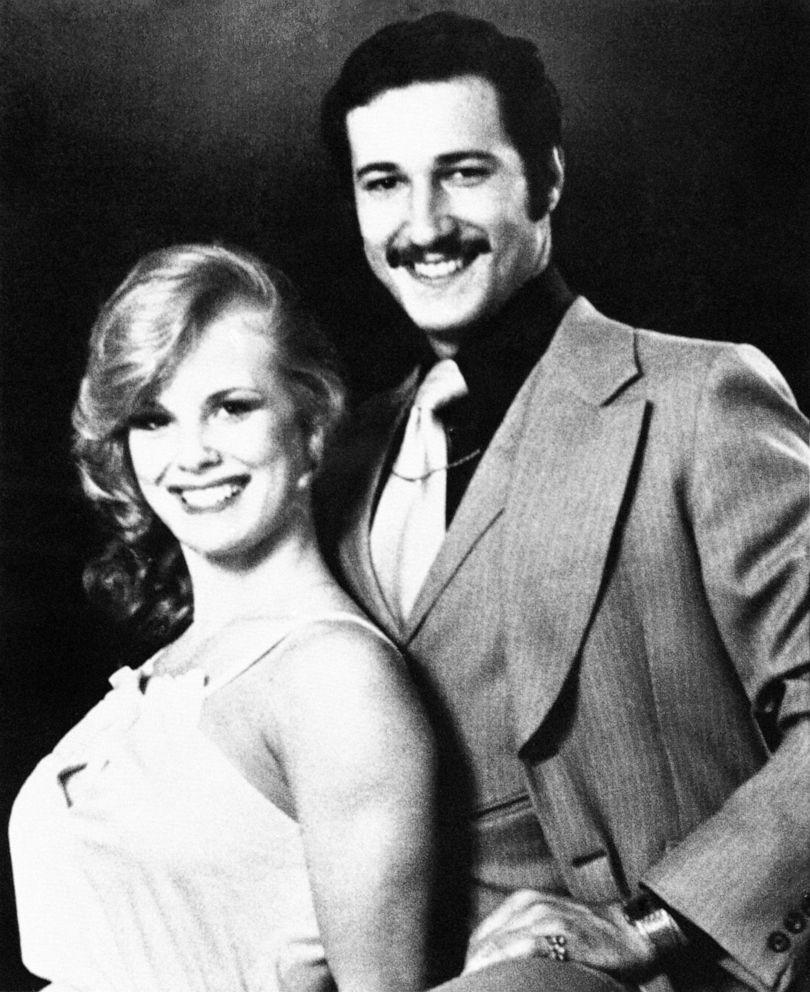
In June 1979, several months after Snider had joined Stratten in Los Angeles full-time, the couple got married. Grabowski said she and Hefner, as well as others, opposed the marriage.
But Stratten went through with it because she didn't think she could get out of it, according to Rosanne Katon-Walden, an actress and September 1978 Playmate of the Month.
"She felt that this whole blossoming -- this whole new world that came to her -- came to her because of Paul," Katon-Walden said.
By the time they were married, Hefner had connected Stratten with a professional manager and a money manager, further relegating Snider to the sidelines.
After an appearance on "Playboy's Roller Disco and Pajama Party," which aired on ABC in late 1979, Stratten began landing acting gigs, including bit parts in films and TV shows like "Fantasy Island" and "Buck Rogers in the 25th Century."
In 1980, in addition to being named Playmate of the Year, she landed the title role in the sci-fi comedy "Galaxina."
"She was really happy then. That's when I think it was starting to change with Paul," said Cis Rundle, a former Playboy social secretary.
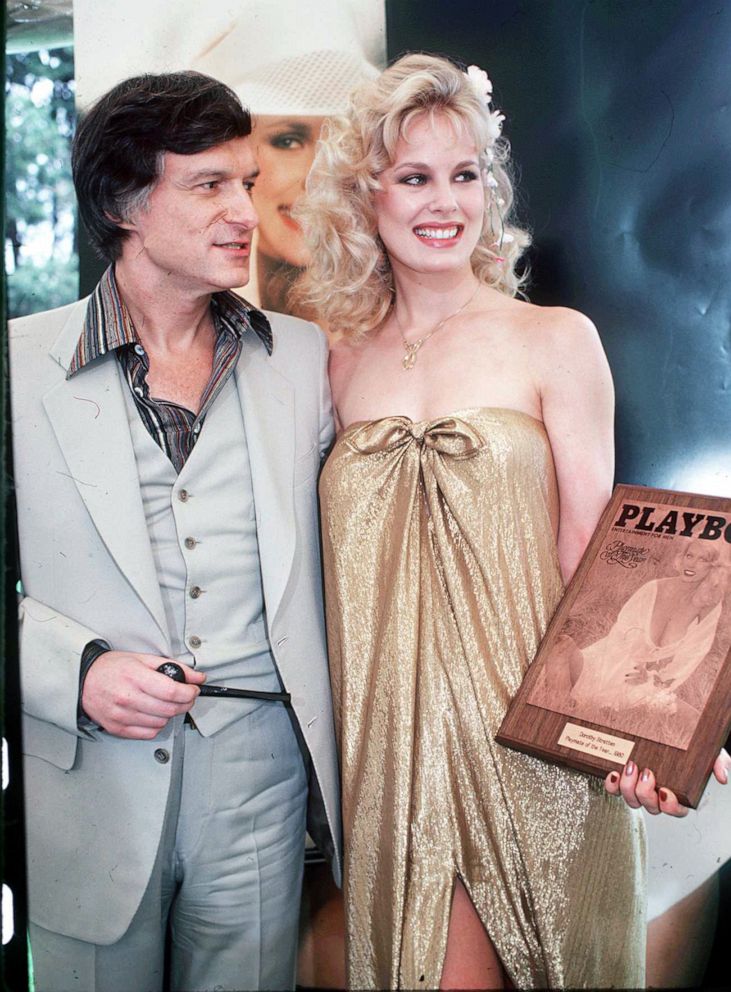
"I think he really thought, 'This is mine,'" added Hemingway. "He wanted ownership of her. He wanted to say that he owned something, that he did something… I think he thought he made her."
Stratten was soon introduced to filmmaker Peter Bogdanovich who, fresh out of a relationship himself and looking for new projects, began spending time at the Playboy Mansion. He became smitten with Stratten and decided to write a role specifically for her in his upcoming film "They All Laughed" starring Audrey Hepburn, Ben Gazzara and John Ritter. It was supposed to be Stratten's big break.
"Peter wanted to make a love story in New York about how falling in love can be a mistake," said Stratten's co-star Colleen Camp. "'They All Laughed' was absolutely a movie about Peter. It was very autobiographical."
In a 1985 interview with "Good Morning America," four years after Stratten was murdered, Bogdanovich said he and Stratten had fallen in love before he started making the movie. Camp said that Bogdanovich confessed to her while in production that he was “madly in love” with Stratten.

"I just cautioned him," Camp said. "I said, 'Peter, be careful because you have no idea who this guy is that she is separated from.'"
As Snider's control over Stratten and her career rapidly unraveled, he started to become desperate. According to Carpenter, he tried to follow through on a project for a poster he had started with Stratten before they got married. When Stratten saw the poster design, though, she turned down the deal.
"That was the final shut down," Carpenter said. "He had no more income."
"As she started to slip away, he started to realize he owned nothing," Hemingway said. "He wasn't doing anything, nobody was admiring him. Hugh Hefner's not going to call him back… and then this deep, deep, deep, freaky thing that was going on inside of him took control and he lost it."
Around this time, Patti Laurman, a teenage grocery store clerk whom Snider was trying to turn into his next Playboy model, had moved into the West Los Angeles house Snider and Stratten had shared with their housemate, Stephen Cushner.
"Paul was distraught," Laurman said. "He was sad. He was like, 'Gosh. She didn't even tell me she loved me or kiss me.' There were times when he talked to me and he would start crying. He would sit on the couch and play his guitar, and he had wrote songs to Dorothy."
Stratten moved in with Bogdanovich once they returned from filming in New York. During that time, she met with Snider and expressed wishes for an amicable separation. She also mentioned a settlement for Snider because he had helped get her to Hollywood, according to Larry Wilcox, executive producer of the 1981 film "Death of a Centerfold: the Dorothy Stratten Story."
It was also around this time that Snider tried to get a gun, according to former L.A. homicide detective Richard DeAnda. He borrowed a .38 revolver from a friend and waited outside Bogdanovich's house, DeAnda said.
Soon after, Snider's friend asked for the gun back, DeAnda said. Then, Snider bought a 12-gauge shotgun from the classified ads. He picked it up on the night of Aug. 13, 1980.
'It looked like it was a horror movie'
On Aug. 14, 1980, Stratten went over to the house that she once shared with Snider, Cushner and Laurman to try to negotiate a settlement with her husband as part of their divorce. Those close to her are said to have expressed their concern with her going to see him alone.
"Hef and Peter kind of forbid her from going to see him," Keough said. "They forbid it. She had to sneak. She had to lie. … She just misjudged that guy so badly. She just had that little flaw that was her flaw: not being able to see the evil in people."
Laurman said she was at the house on that morning but left because she knew Stratten was coming to visit Snider. Cushner said he hadn't been home all day because he'd spent the previous night at a girlfriend's home and then gone to work in the morning.
Cushner said Laurman was back at home when he arrived later that evening. He said he saw Stratten’s car, a Mercury Cougar, and Snider’s Mercedes with the vanity license plate “STAR 80” -- which is where Bob Fosse later sourced the title for his Stratten biopic.
Cushner and Laurman said they were watching TV upstairs, assuming that Snider and Stratten had reconciled and were downstairs together. Finally, after a few hours of silence, Cushner and Laurman said they decided to knock on Snider's bedroom door, but there was no answer. Then Cushner said he opened the door.
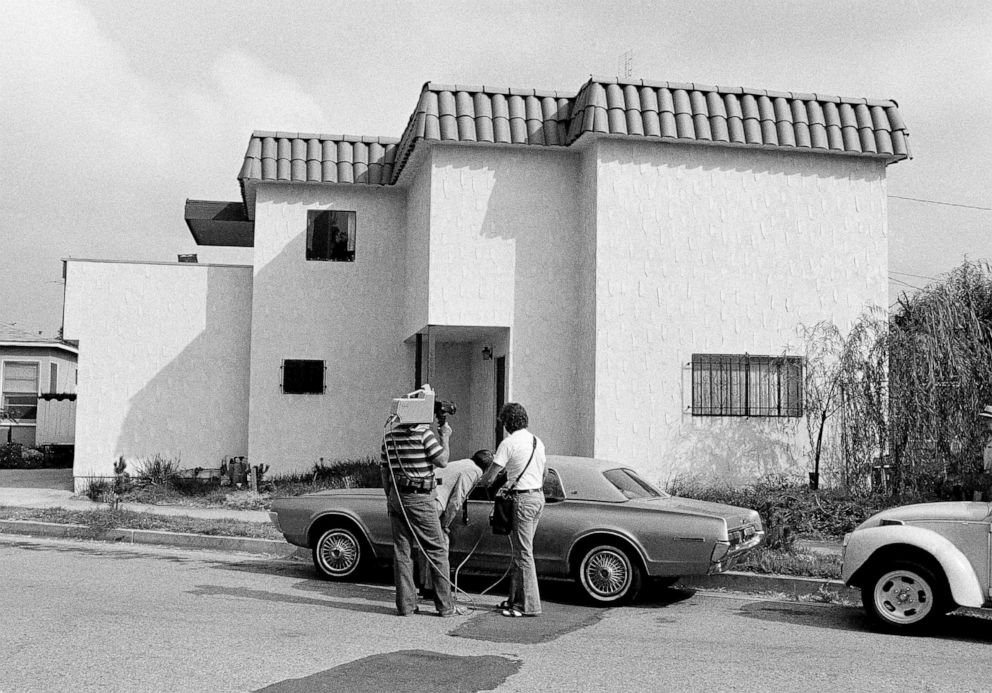
Inside they found Snider and Stratten's naked bodies. Both were dead.
"It looked like it was a horror movie -- a staged horror movie -- like mannequins and fake blood," Laurman said. "That's a picture that never goes away, a mental picture that's stuck in here forever."
Police later determined that Snider had raped Stratten and shot her in the face with a 12-gauge shotgun before turning the gun on himself. Stratten was 20 years old.
Housemates recall gruesome discovery of finding Dorothy Stratten dead
"I think that if you look at the control factor of…forcing sex upon her, I think that's all a part of his regaining his position of power," DeAnda said. "I think it was more realizing that he had no future without her and didn't want anyone else to have a future [with] her."
The horrific murder-suicide of the rising star and her husband sent shockwaves through Hollywood.
"[Snider] ultimately had to do what he did, and basically -- to Hefner, to Bogdanovich, [to] everybody else, to society in general -- put up not one but two middle fingers and say, 'That's what you get for messing with Paul Snider,'" Cushner said.
Both Bogdonavich and Hefner were devastated over losing Stratten.
"Hef was never the same. Part of him died. Part of all of us died because Dorothy was special to us," Rundle said.
Stratten was buried in the same Los Angeles cemetery as Marilyn Monroe. Bogdanovich chose the inscription on her tombstone -- a quote from Ernest Hemingway’s novel “A Farewell to Arms.”
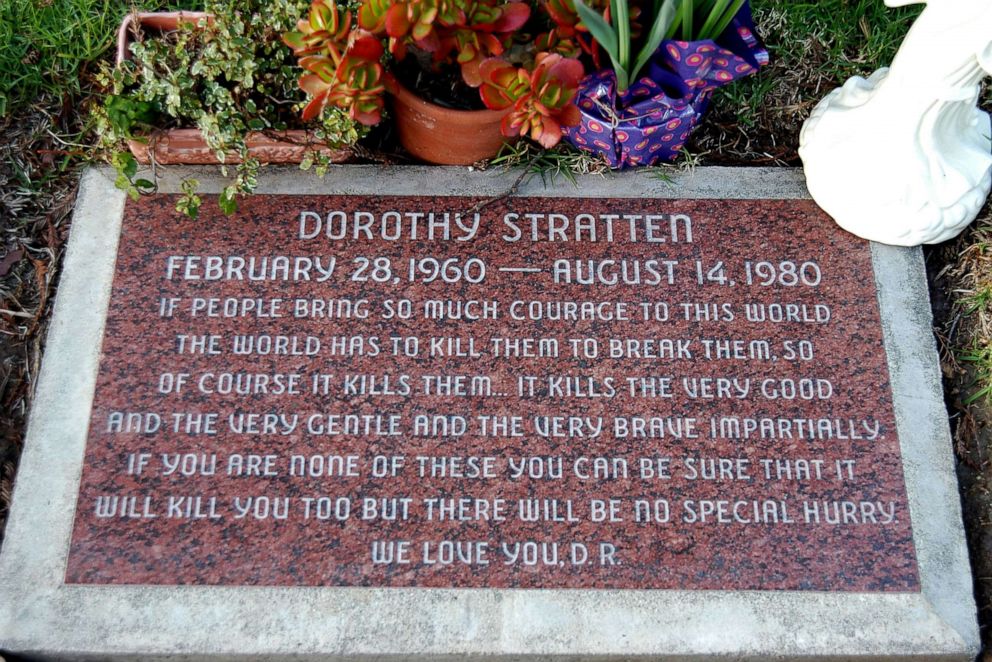
'She would have been a star'
Four years after Stratten's death, Bogdanovich published a book called "The Killing of The Unicorn" in which he blamed Hefner and the culture of Playboy for contributing to Stratten's death. He also accused Hefner of making unwanted advances on Stratten at the Playboy Mansion in 1978.
In a 1985 interview with ABC News, Geraldo Rivera asked Hefner, "For the record, did you seduce her?" Hefner replied, "No, I didn't. And for the record, I never tried to."
"Dorothy's tragic death was motivated not in any way by her association with Playboy, but clearly by the breakup of her marriage, because of the affair with Peter Bogdonavich," Hefner said during a 1985 press conference.
Bogdanovich went on to take care of Stratten's family for years after she died, including Stratten's younger sister, Louise Stratten.
"He said, 'If I'd married Dorothy, this would be my family. So I wasn't going to stop being their family because she was dead,'" said Bonnie Fuller, the editor-in-chief of HollywoodLife.com.
Bogdanovich and Louise Stratten's relationship later developed into a romance, and the two married eight years after Dorothy Stratten's murder. They divorced in 2001 but continue to work together on film projects, including the 2014 film "She's Funny That Way."
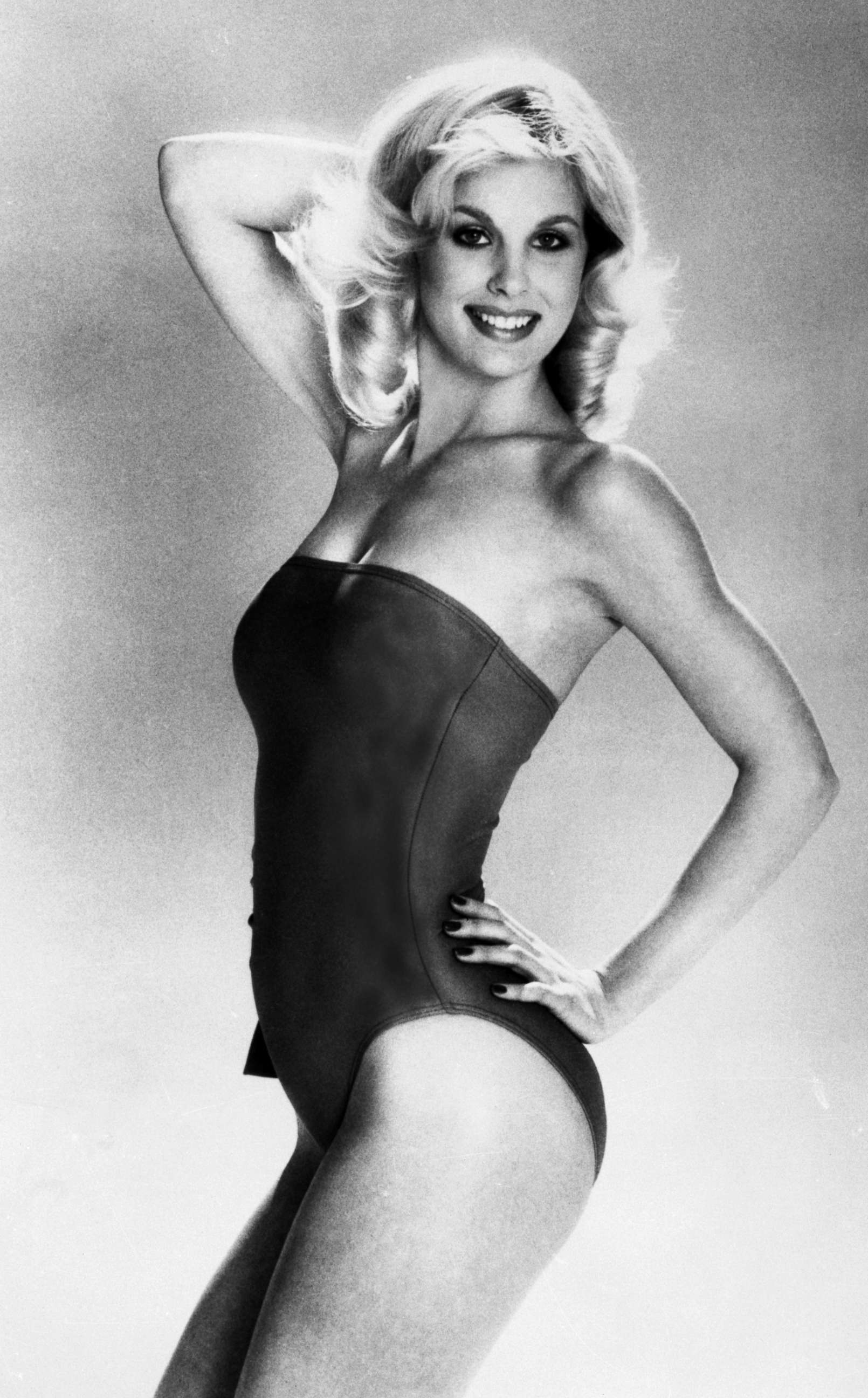
For those who were close to Dorothy Stratten, the horrible tragedy of her death is compounded by the fact that she was so young when she died.
"Had she been privileged to live out her life and her career she would've been a star," Cushner said. "She would've been a Julia Roberts. She would've been a Reese Witherspoon."
"But over and above that, she was a great person, and [she] gave herself to everybody that she met. … In my book, there'll never be another like her," he continued. "Dorothy was something special. Always will be. Even 39 years later."
ABC News' Taryn Hartman and Anna Perczak contributed to this report




